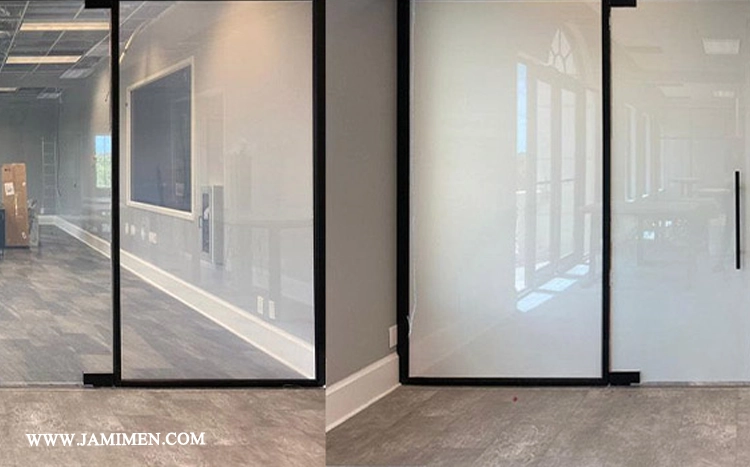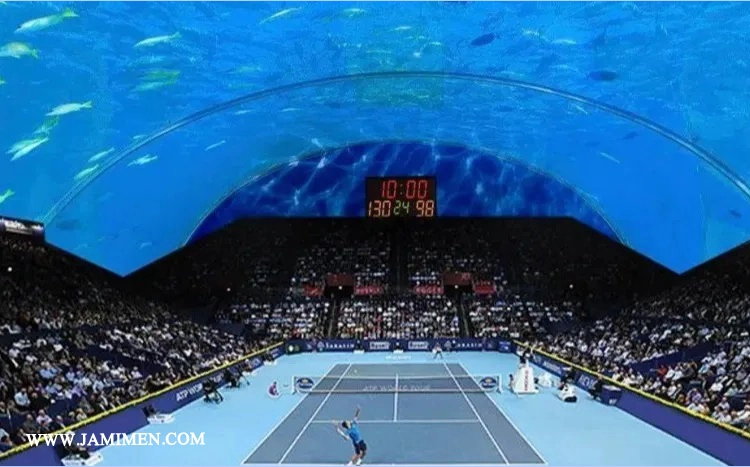Bulletproof Glass
Bulletproof glass, also recognized as ballistic glass, represents a specialized form of glass meticulously engineered to furnish exceptional resistance against bullet penetration. These glass panels are meticulously crafted through the amalgamation of multiple layers of glass interposed with polycarbonate material, bonded together using specially formulated adhesives. Bulletproof glass finds its primary application in venues where safeguarding against firearm attacks stands as an imperative necessity.

Bulletproof glass, also recognized as ballistic glass, represents a specialized form of glass meticulously engineered to furnish exceptional resistance against bullet penetration. These glass panels are meticulously crafted through the amalgamation of multiple layers of glass interposed with polycarbonate material, bonded together using specially formulated adhesives. Bulletproof glass finds its primary application in venues where safeguarding against firearm attacks stands as an imperative necessity. Noteworthy establishments like financial institutions, jewelers' shops, governmental installations, and military vehicles prominently feature the deployment of this fortified glass.
The operational principle of bulletproof glass functions in the subsequent manner: upon the impact of a projectile upon the glass surface, the outermost layer of glass fractures, while the inner polycarbonate stratum adeptly absorbs and diffuses the kinetic energy of the incoming projectile. This efficaciously precludes the projectile from permeating through to the innermost glass layer. Consequently, occupants or objects positioned behind the protective glass barrier remain shielded from harm. The level of resistance conferred by bulletproof glass hinges on its thickness and the number of composite layers integrated into its structure.
History of Bulletproof Glass
The history of bulletproof glass can be traced back to the early 20th century. The initial documented instance of bullet-resistant glass dates to 1909 when the French chemist Édouard Bénédictus introduced his invention. He employed celluloid, a precursor to contemporary plastics, to fortify the glass's resilience. In 1914, Henry Ford also adopted laminated glass, comprised of layers of glass and celluloid, in the manufacturing of his automobiles.
During the course of World War II, bulletproof glass saw further advancements, incorporating materials such as polyvinyl butyral (PVB), polyurethane, and polycarbonate. In the present day, the production of bulletproof glass leverages cutting-edge technologies and complies with international standards.
Types of Bulletproof Glass
Various types of bulletproof glass are available, differing in material, thickness, the number of layers, and specific safety standards. Some common types include:
Acrylic Bulletproof Glass:
Suitable for moderate and medium-security applications, acrylic bulletproof glass consists of a single layer of hard acrylic plastic. It offers resistance against impacts and is repairable, as minor scratches can be polished out.
Polycarbonate Bulletproof Glass:
Polycarbonate bulletproof glass is designed for high-security needs. It comprises multiple layers of polycarbonate and glass laminated together with heat and pressure. Unlike acrylic, it is not repairable and must be replaced if scratched or damaged.
Laminated Bulletproof Glass:
Laminated bulletproof glass finds its optimal application in environments demanding the utmost security measures. It comprises numerous strata of glass intricately combined with materials such as polyvinyl butyral (PVB), polyurethane, SentryGlas, or ethylene-vinyl acetate (EVA), bound together through chemical processes. Notably, this category of glass exhibits exceptional robustness and possesses the capability to undergo polishing, thereby restoring its optical clarity when required.
Bulletproof Glass Structure
The weight of bulletproof glass depends on factors such as material, thickness, the number of layers, and specific standards. For precise weight calculations, you can utilize online software for calculating the weight of bulletproof glass. In this software, by inputting the shape, dimensions, material, and thickness of the glass, you can automatically determine its weight.
In general, bulletproof glass is heavier than regular glass. For instance, one square meter of bulletproof glass made from polycarbonate with a thickness of 25 millimeters weighs approximately 50 kilograms. In contrast, one square meter of regular glass with the same thickness weighs around 30 kilograms.
Differences Between Bulletproof Glass and Plastic
Bulletproof glass and plastic are two distinct materials, each with its unique characteristics and applications. Some of the main differences between them include:
Material:
Bulletproof glass is a type of glass constructed from multiple layers of glass and polycarbonate.
Plastic is a synthetic material composed of hydrocarbon monomers.
Resistance:
Bulletproof glass offers high resistance against bullet penetration but has lower resistance to impacts.
Plastic has less resistance against bullets and can be more vulnerable to damage. It is also sensitive to factors like heat, abrasion, corrosion, and UV radiation.
Transparency:
Bulletproof glass is transparent, colorless, and free from distortion, providing excellent visual clarity with no waviness or ripples.
Plastic can have coloration and may become cloudy over time. It can also reflect light and result in reduced image clarity.
Bulletproof Glass Features
Some key features of bulletproof glass include:
Production in Flat or Curved Forms:
Bulletproof glass can be produced in either flat or curved shapes, depending on its intended use. For example, curved bulletproof glass is suitable for automotive, aviation, and train windows.
Custom Dimensions and Patterns:
Depending on its purpose, bulletproof glass can be manufactured in various dimensions and patterns. It can be colored, have engraved designs, or incorporate patterns, offering flexibility in design and aesthetics.
High Durability:
Due to its exceptional strength, bulletproof glass has a long lifespan. It withstands bending, impact, abrasion, and UV radiation without easy breakage or color distortion.
Excellent Visual Clarity:
Bulletproof glass exhibits superior optical quality, being free from distortion or waviness. It provides a clear and undistorted view.
Non-Repairability:
Bulletproof glass is not repairable. If it sustains scratches or damage, it must be replaced. This is because the polycarbonate layer cannot recover its original shape or integrity after deformation or cracking, which would compromise visual quality.
Applications of Bulletproof Glass
Bulletproof glass finds applications in various settings, including:
Banks and Currency Exchanges: These establishments are frequent targets for theft and other criminal activities, making them susceptible to attack. To protect employees and customers, banks and currency exchanges utilize bulletproof glass for windows, doors, ATMs, and cash counters.
Jewelry Stores:
Jewelry stores represent prime targets for potential theft. In order to safeguard precious assets like gold and jewelry, these establishments employ bulletproof glass extensively, securing their windows, doors, safes, and display cases.
Government Facilities:
Government institutions, including the Presidential Palace, judicial offices, parliament, embassies, and consulates, hold pivotal roles in preserving national interests. These entities may confront various threats, encompassing those posed by terrorist organizations, espionage activities, or political hostilities. In order to deter potential attacks on their personnel and officials, these government facilities extensively utilize bulletproof glass to fortify their windows and entrances.
Military Vehicles:
Military vehicles such as tanks, armored personnel carriers, helicopters, and others face significant risks during combat situations and warfare. They require protection for soldiers and crew members against threats like bullets, rockets, mines, and more. To mitigate these risks, military vehicles utilize bulletproof glass for windows, doors, vision panels, and other vulnerable areas.
These are just some of the applications of bulletproof glass, and it may find utility in other contexts as well.
Methods for Assessing Bulletproof Glass Resistance to Military Weaponry Attacks:
Depending on the type and firepower of military weaponry, standard bulletproof glass may not offer sufficient protection, necessitating increased resistance measures. Some methods to enhance bulletproof glass resistance to military weaponry attacks include:
Increasing Glass Thickness and Layer Count:
A straightforward and effective approach to boost bulletproof glass resistance is to increase the number of layers and thickness. Greater thickness and more layers allow the glass to absorb and distribute more energy, preventing bullets from penetrating deeper layers. However, this approach also leads to increased weight and cost.
Adding Metal or Ceramic Layers:
Another method to enhance bulletproof glass resistance is to incorporate metal or ceramic layers between the glass layers. These additional layers reinforce the glass surface, making it more resistant to penetration and reducing its vulnerability to projectiles.
Bulletproof Glass Pricing:
The price of bulletproof glass depends on the material, thickness, number of layers and desired standards.













